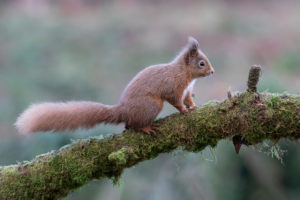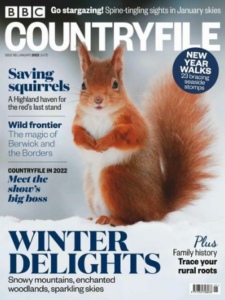Just before the Christmas holidays the Saving Scotland’s Red Squirrels project got a nice early present – the announcement of a new funding package to keep the project going.
I have been covering SSRS for quite a few years now. It’s tackling the tricky problem of grey squirrel “control” – the euphemism for culling – in a careful, considered way, to give native red squirrels a chance to thrive.
The £1.08 million the lead organisation, Scottish Wildlife Trust, has pulled in so far from a range of backers will allow it to keep going for another two years, which is good news.
It also gives me an excuse to use one of their extremely cute squirrel pictures and to mention that SSRS were very helpful when I was putting together the cover feature on red squirrels for BBC Countryfile magazine’s current edition.

But – and there always is a “but” when I’m writing about stuff – it’s just not good enough news.
Third-sector projects, and sometimes entire organisations, always seem to be tied to these funding cycles, where they get money for their good work for a few years, but then have to find some more to keep it going.
The commonly-used three-year funding cycle usually means two years of doing the job the cash is intended for, and the third year desperately scrambling for the money to keep going for another three years.
That SSRS has had to put out the begging bowl again, to keep doing work most people in Scotland would say was a public good, seems quite wrong. It’s similar to grants for capital projects, for, say, path building, where grant-givers hand out big cash for the big work, but when it comes to maintenance, there’s no steady trickle of money for path upkeep.
The model seems to be based on the idea that once the capital scheme is done it’ll generate revenue, but there isn’t much money generated by shooting grey squirrels, or letting people walk on your paths.
 The red squirrel project needs continuing maintenance – to be straight, plenty of grey control – otherwise all its good work so far will be undone.
The red squirrel project needs continuing maintenance – to be straight, plenty of grey control – otherwise all its good work so far will be undone.
I understand over the next couple of years the SSRS team will be looking for a permanent source of income. Looking at their figures I would say it’s about £500,000 a year, or 10p per Scottish resident annually.
It’s not a lot to save this much-loved species (and of course conservation of its habitat benefits a lot more species), and to ensure the good work so far isn’t wasted. It’s a revolutionary suggestion, I know, but could the taxpayer, via the Scottish Government, not just somehow scrape together the money needed?